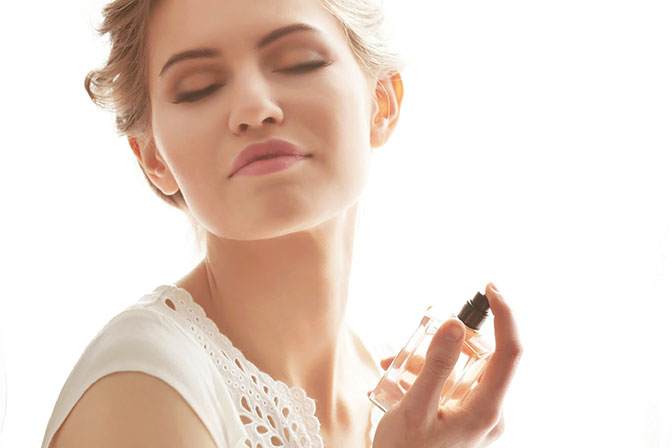by Dana Sleger
The perfume section in department stores or places like Sephora or Ulta can be like a playground or be really intimidating — or both. Because there absolutely is not one universal perfume that fits everyone, hunting for your signature scent is a task that requires some research.
Of course, one of the most iconic fragrances in the world is Chanel No. 5, but as lovely as it smells, the wonder inside that bottle isn’t for everyone. According to The Perfume Society, there are eight fragrance families: Fresh, Floral, Floriental, Oriental, Gourmand, Chypre, Woody and Fougere.
Chanel No. 5 falls into the floral category due to notes of neroli, ylang ylang, may rose, jasmine and more, but for someone who’s body chemistry adapts more to a fresh scent would be better off with notes of lemon, bergamot, orange, grapefruit and mandarin.
If sweeter scents are your preference, then perfumes in the gourmand family would be best because it draws on notes of caramel, chocolate, milk, coffee, Cognac, toffee, almonds, vanilla and more.
Steven Claisse is an internationally known perfumer with a 35-year career in scent creation. As one of the world’s best noses and former president of the American Society of Perfumers, he “nose” a thing or two about finding the right scent.
“Think of a fragrance as the Mona Lisa,” Claisse says. “Two people can look at the same picture and one sees a wry smile while the other sees a disapproving frown — it’s all perception. How you smell something is very different then how someone else smells something. You may be sensitive to green notes that may be in a floral scent and thus pick up on those green nuances in that fragrance. Your friend, on the other hand, may smell the same fragrance and pick up more on the heady floral then the subtle green aspects that you key in on. Fragrance is truly subjective.”
The best route for finding your scent is simply experimenting with a spray here and there, and letting it linger throughout the day to see how it adjusts to your body chemistry. The immediate smell after a spritz will be different a few hours later, if it’s still there at all. And remember, the higher concentration of oils will determine how long the scent lasts, hence the difference between perfume, eau de toilette and eau de cologne.
You want something that sticks around, so it’s really important to know where to apply perfume. If Coco Chanel had her way, her advice is to apply “where you want to be kissed.” The Perfume Society extends this mantra well: “Spray/dab on your ‘hot spots’, or pulse points — behind the ears, temples, wrists, nape of neck, back of the knees, in the crease of your elbows, between your breasts, the small of your back, navel area. The blood flows close to the surface in these zones, and heats the fragrance oils. But do be aware of one no-no: perfume industry ‘insiders’ never, ever rub their wrists together after applying fragrance, because it affects the oils. Spray, waft your wrists around — and be patient!”
It’s not easy finding that one special scent that jives perfectly with your body chemistry, but it sure is worth it when your signature makes a lasting impression even after you’ve left a room.


